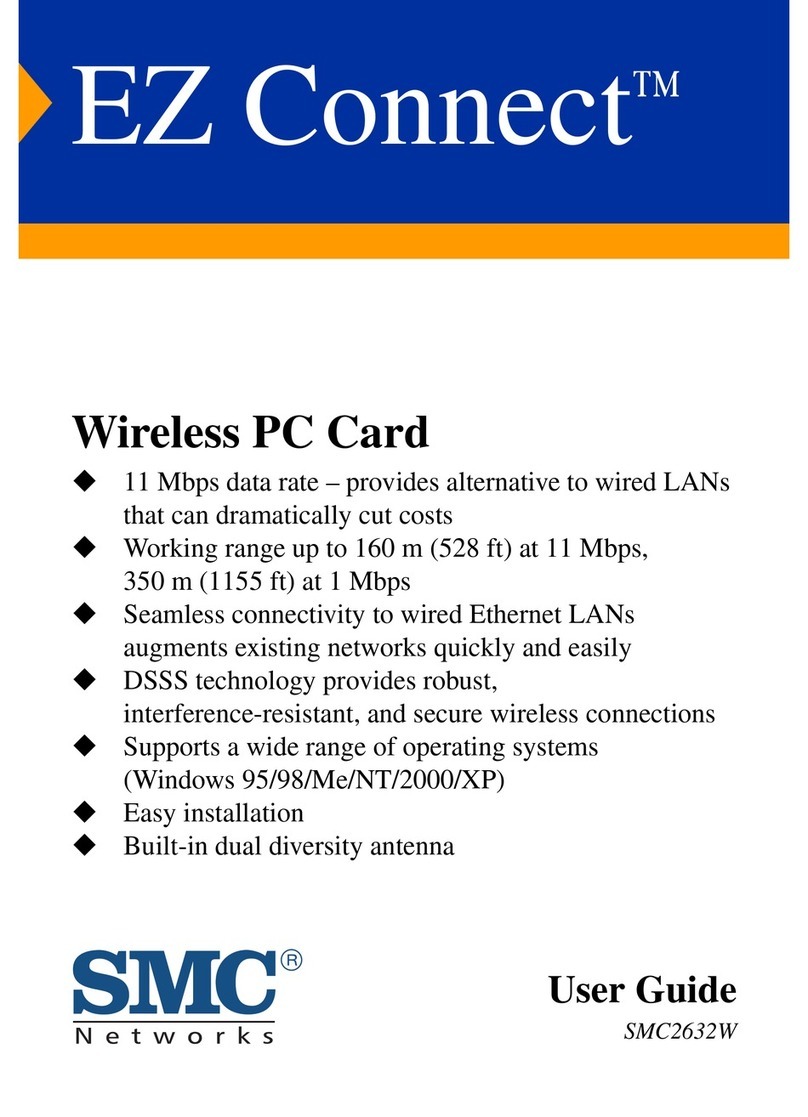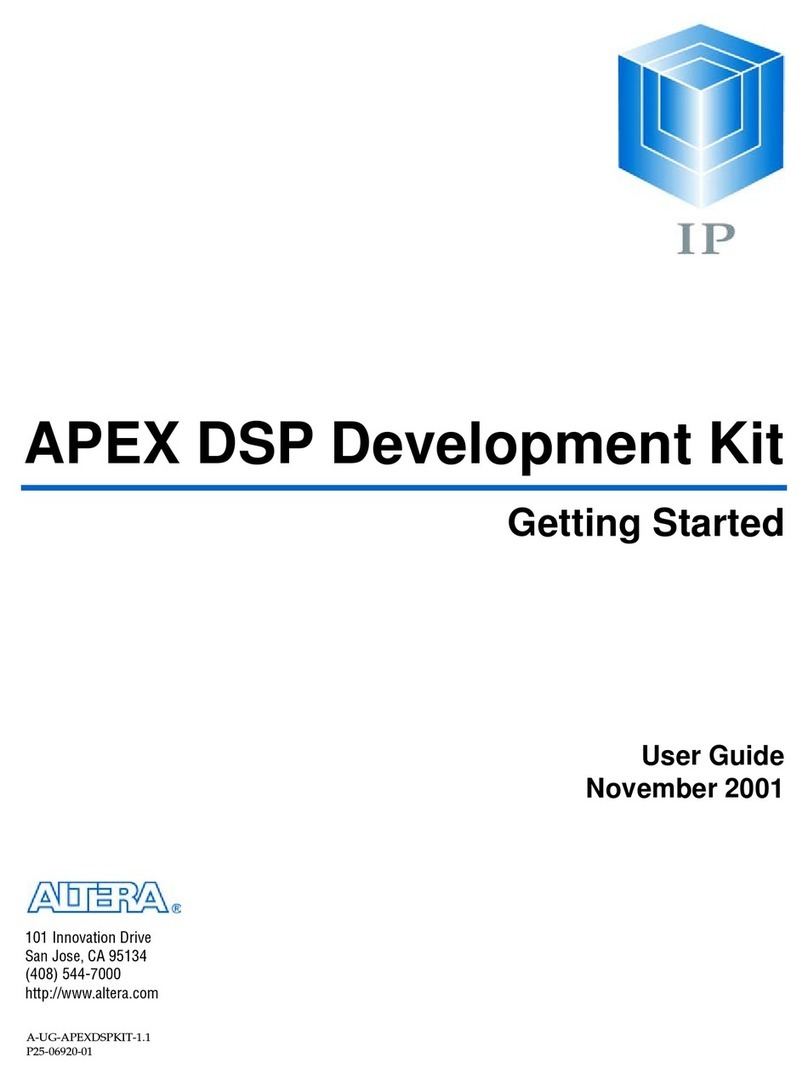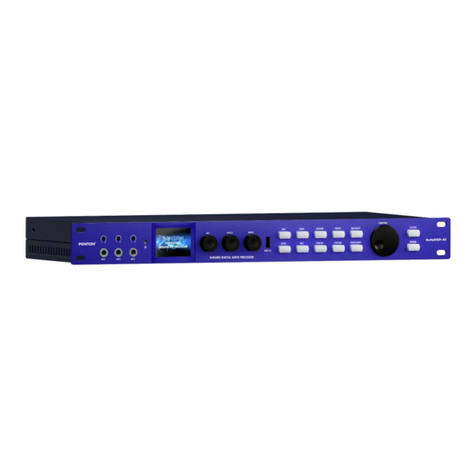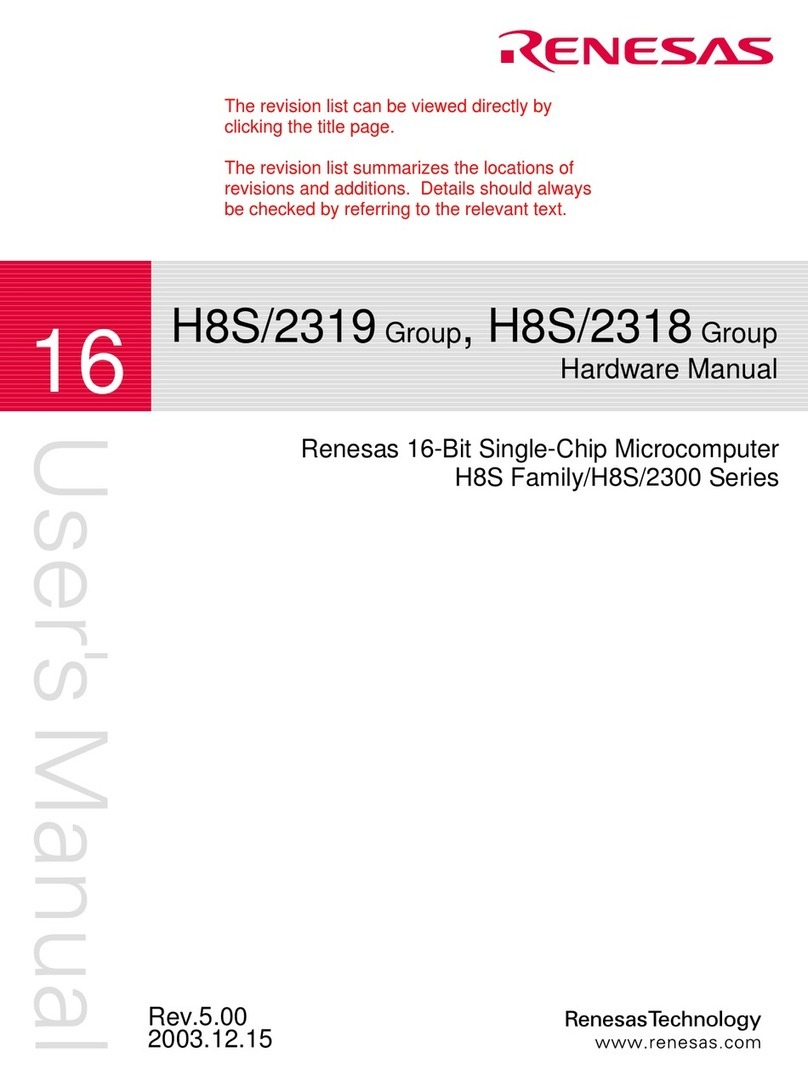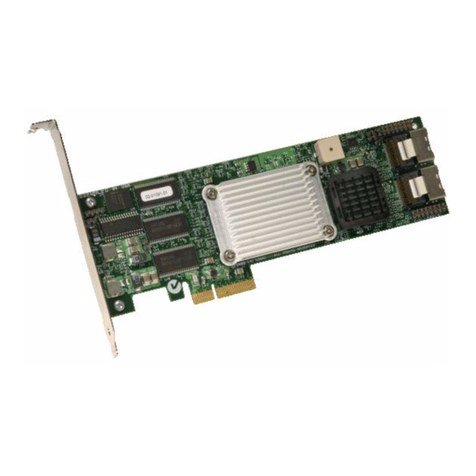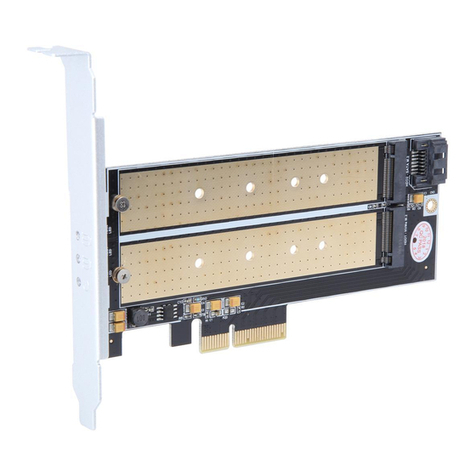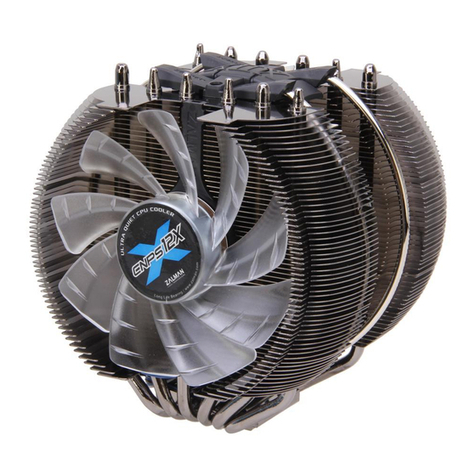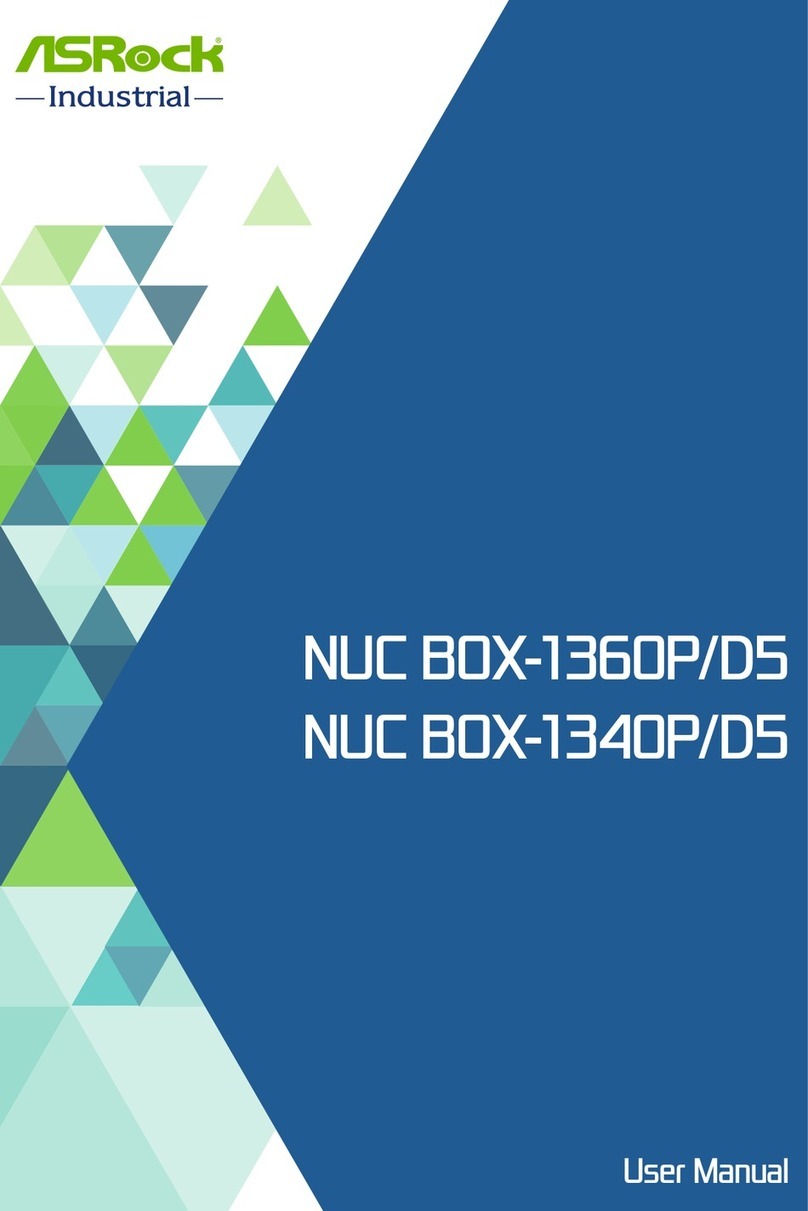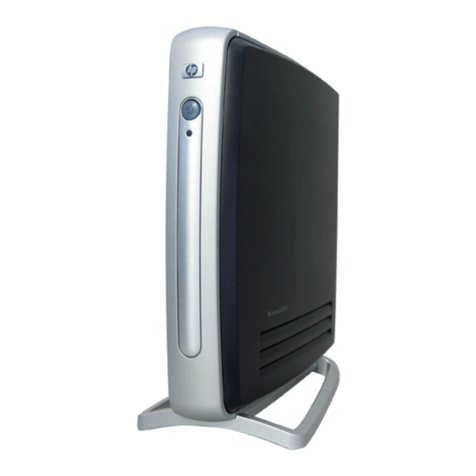Lippert Components Cool LiteRunner-86DX User manual

TME-104-CLR-86DX-R0V2.doc
Revision 0.2 / March 11
©LiPPERT Embedded Computers GmbH
Hans-Thoma-Str. 11
D-68163 Mannheim
http://www.lippertembedded.com/
Cool LiteRunner-86DX
PC/104 CPU Board
Technical Manual

Technical Manual Cool LiteRunner-86DX
LiPPERT Document: TME-104-CLR-86DX-R0V2.doc Revision 0.2
Copyright ©2011 LiPPERT Embedded Computers GmbH, All rights reserved
Contents and specifications within this manual are subject of change without notice.
Trademarks
MS-DOS, Windows, Windows 95, Windows 98, Windows NT and Windows XP are trademarks of
Microsoft Corporation. PS/2 is a trademark of International Business Machines, Inc. Intel and Solid
State Drive are trademarks of Intel Corporation. Geode is a trademark of Advanced Micro Devices.
PC/104 is a registered trademark of PC/104 Consortium. All other trademarks appearing in this
document are the property of their respective owners.
Disclaimer
Contents and specifications within this technical manual are subject of change without notice.
LiPPERT Embedded Computers GmbH provides no warranty with regard to this technical manual or
any other information contained herein and hereby expressly disclaims any implied warranties of
merchantability or fitness for any particular purpose with regard to any of the foregoing. LiPPERT
Embedded Computers GmbH assumes no liability for any damages incurred directly or indirectly
from any technical or typographical errors or omissions contained herein or for discrepancies
between the product and the technical manual. In no event shall LiPPERT Embedded Computers
GmbH be liable for any incidental, consequential, special, or exemplary damages, whether based on
tort, contract or otherwise, arising out of or in connection with this user’s guide or any other
information contained herein or the use thereof.

TME-104-CLR-86DX-R0V2.doc Rev 0.2 i
Table of Contents
1Overview 1
1.1 Acronyms.................................................................................................. 1
1.2 Introduction ............................................................................................... 2
Features .................................................................................................... 2
Block Diagram............................................................................................. 3
1.3 Ordering Information .................................................................................... 4
Cool LiteRunner-86DX models ......................................................................... 4
Cable sets and accessories ............................................................................. 4
1.4 Specifications............................................................................................. 5
Electrical Specifications ................................................................................. 5
Environmental Specifications ........................................................................... 5
MTBF........................................................................................................ 5
1.5 Mechanical ................................................................................................ 6
Top .......................................................................................................... 6
Bottom (vertical mirrored) ............................................................................... 7
2Getting Started 8
2.1 Connector Locations .................................................................................... 8
Top .......................................................................................................... 8
Bottom ...................................................................................................... 9
2.2 Jumper Locations...................................................................................... 10
2.3 LED indicators .......................................................................................... 11
2.4 Hardware Setup........................................................................................ 12
3Module Description 13
3.1 Processor + Chipset (SoC: System on Chip)...................................................... 13
3.2 MicroSD Slot............................................................................................ 14
3.3 Ethernet Controller..................................................................................... 14
Ethernet Interface ........................................................................................14
3.4 On Board Power Supply .............................................................................. 15
Power Connector ........................................................................................15
3.5 EIDE Port ................................................................................................ 16

TME-104-CLR-86DX-R0V2.doc Rev 0.2 ii
EIDE Connector ..........................................................................................16
3.6 PS/2 Interface .......................................................................................... 17
Keyboard and Mouse Connector.....................................................................17
3.7 USB 2.0 Ports .......................................................................................... 17
USB 2.0 Connector 0/1 .................................................................................17
USB 2.0 Connector 2/3 .................................................................................18
3.8 Serial Ports.............................................................................................. 19
COM1 ......................................................................................................19
COM2 ......................................................................................................20
RS485-Termination Jumpers ..........................................................................20
3.9 Speaker.................................................................................................. 21
3.10 External Power-Button ................................................................................ 21
3.11 Reset-In Signal ......................................................................................... 22
3.12 External Battery ........................................................................................ 22
3.13 Supervisory ............................................................................................. 23
3.14 Mini-PCI BUS Interface ............................................................................... 24
Mini-PCI Connector (X20) ..............................................................................25
3.15 PC/104 Bus Interface ................................................................................. 26
PC/104 Bus Connector .................................................................................26
3.16 JTAG-CPU (BIOS recovery) .......................................................................... 27
3.17 FPGA (Field Programmable Gate Array) ........................................................... 27
3.18 JTAG-FPGA............................................................................................. 28
3.19 FPGA-I/O Connectors................................................................................. 28
Differential signal and “Global Clock” connector 1 (X13)..........................................28
Differential signal and “Global Clock” connector 2 (X15)..........................................29
Single ended signal connector 1 (X14) ...............................................................29
Single ended signal, VCCO and VREF connector 1 (X16).........................................30
3.20 BoR – “Bridge of Redundancy” connector ........................................................ 31
3.21 GPS – Global Positioning System................................................................... 33
3.22 SMC Service Connector .............................................................................. 33
4Using the Module 34
4.1 Watchdog ............................................................................................... 34

TME-104-CLR-86DX-R0V2.doc Rev 0.2 iii
4.2 LEMT functions......................................................................................... 34
4.3 BIOS...................................................................................................... 35
Battery Jumper ...........................................................................................35
Configuring the BIOS....................................................................................35
Trouble Shooting BIOS Settings ......................................................................35
4.4 Programming Examples .............................................................................. 36
GPIOs on SUPERVISORY ..............................................................................36
Watchdog .................................................................................................37
RS232 / RS485 switching ..............................................................................39
4.5 Drivers ................................................................................................... 40
5Address Maps 41
5.1 Memory Address Map ................................................................................ 41
5.2 I/O Address Map ....................................................................................... 42
5.3 Interrupts ................................................................................................ 44
5.4 DMA Channels.......................................................................................... 44
Appendix A, Contact Information A
Appendix B, Additional Information B
B.1 Additional Reading....................................................................................... B
B.2 PC/104..................................................................................................... B
Appendix C, Getting Help C
Appendix D, Revision History D

TME-104-CLR-86DX-R0V2.doc Rev. 0.2
1(44)
1Overview
1.1 Acronyms
ATA Advanced Technology Attachment
BIOS Basic Input Output System
CD Compact Disc
CF Compact Flash
COM Communication Equipment
CPU Central Processing Unit
DAC Digital-to-Analog-Converter
DDR Double Date Rate
DMA Direct Memory Access
DOT Dynamic Overclocking Technology
EIDE Enhanced Integrated Device Electronics
EMC Electromagnetic Compatibility
ESPI External SPI bus of the Vortex86DX
ETH Ethernet
FIFO First In First Out
FPGA Field Programmable Gate Array
FPU Floating Point Unit
GPIO General Purpose Input Output
GPS Global Positioning System
GP-
SPI
GPIO based SPI bus
HDD Hard Disk Drive
I²C Inter-Integrated Circuit
IP Internet Protocol
ISA Industry Standard Architecture
LED Light Emitting Diode
LPC Low Pin Count
MAC Media Access Control
MMU Memory Management Unit
PCI Peripheral Component Interconnect
PE Potential Earth
PME Power Management Event
PHY Physical Interface
PLL Phase-Locked Loop
PS/2 Personal System/2
PWR Power
SD Secure Digital (MicroSD – Micro Secure Digital)
SDHC SD High Capacity
SMB System Management Bus
SMC System Management Controller
SPI Serial Peripheral Interface
TCP Transmission Control Protocol
UART
Universal Asynchronous Receiver Transmitter
USB
Universal Serial Bus
UDMA
Ultra-Direct Memory Access
UDP
User Datagram Protocol
VGA Video Graphics Array
WDOG Watchdog

TME-104-CLR-86DX-R0V2.doc Rev. 0.2
2(44)
1.2 Introduction
The Cool LiteRunner-86DX is a PC/104 board with DMP’s Vortex86DX single chip solution and has a very good
performance- power- ratio. The board comprises all peripherals needed for an embedded PC on a small 3.775" by
4.050" printed circuit board.
The Cool LiteRunner-86DX integrates a powerful yet efficient DMP Vortex86DX with a Xilinx FPGA and a GPS
module to form a complete PC, with all the standard peripherals already onboard. There is no graphic controller
and no audio controller integrated.
One fast 100/10BaseT Ethernet port, two RS232/RS422/RS485 serial ports, four USB 2.0 host ports and a USB
device port handle the communication with external devices. There are PS/2 connectors for keyboard and mouse
as well as an IDE ATA100 adapter allows connection of hard disk or CD drives. Applications that require non-
moving storage can use the MicroSD slot or the bootable flash.
System expansion can easily be realized over PC/104, Mini-PCI, SPI, LPC and I²C bus connectors.
The Cool LiteRunner-86DX is powered by a 5V-only supply and supports ACPI, advanced power management and
PCI power management. Two Cool LiteRunner-86DX boards can run together in a redundancy mode to make
security critical applications more secure.
The Cool LiteRunner-86DX runs DOS, Windows XP and Linux operating systems.
Features
CPU + Chipset (single chip solution)
•DMP Vortex86DX (600 / 800 / 1000 MHz)
Extension slots
•1 x 16-bit PC/104 with full DMA capability
•1 x Mini PCI Slot
Main Memory
•soldered 256 or 512 MB DDR2 RAM 333 MHz
Interfaces
•1 x Ethernet 10/100BaseT
•MicroSD slot
•ATA-6 EIDE (Ultra DMA-100)
•PS/2 Keyboard/Mouse
•4 x USB 2.0 ports
•2 x RS232 / RS485 / RS422, software selectable
•MISC signals:
external power button, I²C bus, speaker, external
reset button, hardware monitoring and general
purpose signals external battery connector
•Redundancy over cable possible
•Power supply
Onboard devices
•1x uBlox GPS module (Galileo ready)
•1x Customer-I/O FPGA (Xilinx)
•
1x bootable 8MB flash
•1x SMC / LEMT
Other configurations are possible at high volumes.

TME-104-CLR-86DX-R0V2.doc Rev. 0.2
3(44)
Block Diagram

TME-104-CLR-86DX-R0V2.doc Rev. 0.2
4(44)
1.3 Ordering Information
Cool LiteRunner-86DX models
Order number
Description
t
02-0016-00 Cool LiteRunner-86DX with DMP Vortex86DX,
256
Operating temp. range:
t
= 7 à0°C … +60°C
MB DDR2 RAM, 4x USB2.0, EIDE,
MicroSD socket, 2x COM, PS/2 Keyboard, PS/2 Mouse, 1x Fast Ethernet 100/10BaseT, no
GPS, no FPGA, WDOG, RTC, Battery, LEMT, PC/104 bus
t
= 8 à-20°C … +60°C
t
= 9 à-40°C … +85°C
t
02-0011-00 Cool LiteRunner-86DX with DMP Vortex86DX,
512
Operating temp. range:
t
= 7 à0°C … +60°C
MB DDR2 RAM, 4x USB2.0, EIDE,
MicroSD socket, 2x COM, PS/2 Keyboard, PS/2 Mouse, 1x Fast Ethernet 100/10BaseT, 1x
uBlox GPS, 1x Xilinx FPGA, WDOG, RTC, Battery, LEMT, PC/104 bus
t
= 8 à-20°C … +60°C
t
= 9 à-40°C … +85°C
Cable sets and accessories
Order number
Description
763-0020-10 Adapter Cable Set
PS/2 keyboard and mouse, Ethernet, 2x USB, COM1, COM2, IDE (44 pin, 2mm), cable
adapter 2.5" > 3.5", adapter 3.5" > 2.5"
Mini PCI extension boards
Order number
Description
806-0005-10 Mini-PCI module, 2x Firewire port, w/o cable.
Operating temp. range: -20°C ... +60°C
806-0006-10 Mini-PCI module, 2x COM (RS232/422/485), 2 cables.
Operating temp. range: -20°C ... +60°C
806-0017-10 Mini-PCI module, 1x VGA
Operating temp. range: -20°C ... +60°C

TME-104-CLR-86DX-R0V2.doc Rev. 0.2
5(44)
1.4 Specifications
Electrical Specifications
Supply voltage +5 V DC
Rise time < 10 ms
Supply voltage tolerance ± 5% 1
Inrush current
tbd.
Supply current maximal 1.2 A (Windows XP running Benchmark, Board with Mini-PCI VGA)2
Environmental Specifications
typical 0.6 A (Windows XP idle mode)
Operating:
Temperature range 0 … 60 °C (commercial version)
-20 … 60 °C (industrial version)
-40 … 85 °C (extended version)
Temperature change Max. 10K / 30 minutes
Humidity (relative) 10 … 90 % (non-condensing)
Pressure 450 … 1100 hPa
Non-Operating/Storage/Transport:
Temperature range -40 … 85 °C and more t.b.d.
Temperature change Max. 10K / 30 minutes
Humidity (relative) 5 … 95 % (non-condensing)
Pressure 450 … 1100 hPa
MTBF
MTBF at 25°C 290.665 hours
1With that tolerance it is not mentioned that all plugged devices are running with.
2That rate of current is possible when only monitor, mouse and keyboard are plugged.
If there are connected additional peripheral devises the current rises up.

TME-104-CLR-86DX-R0V2.doc Rev. 0.2
6(44)
1.5 Mechanical
Dimensions (LxW) 95.9 mm x 90.2 mm (including I/O extension)
Height Max. 14 mm on topside above PCB
max. 11 mm on bottom side above PCB
Weight 80 g
Mounting 4 mounting holes
Note:
It is strongly recommend using plastic spacers instead of metal spacers to mount
the board. With metal spacers, there is a possible danger to create a short circuit
with the components located around the mounting holes.
This can damage the board!
Top

TME-104-CLR-86DX-R0V2.doc Rev. 0.2
7(44)
Bottom (vertical mirrored)

TME-104-CLR-86DX-R0V2.doc Rev. 0.2
8(44)
2Getting Started
2.1 Connector Locations
Top
The connectors' pin 1 is marked RED
COM2
JTAG:
- Vortex86DX
- FPGA
COM1
IDE
10/100 LAN
USB device
2x
USB
2x
USB
PS2 Keyboard /
Mouse
BoR
(Bridge of
Redundancy)
Power
PC104
MiniPCI
GPS
Antenna

TME-104-CLR-86DX-R0V2.doc Rev. 0.2
9(44)
Bottom
The connectors' pin 1 is marked RED
SMC Service
Connector
MicroSD
Supervisory
FPGA-I/O
Connector
FPGA-I/O
Connector
FPGA-I/O
Connector
FPGA-I/O
Connector

TME-104-CLR-86DX-R0V2.doc Rev. 0.2
10(44)
2.2 Jumper Locations
Top
Jumper X5
RS485
Termination
Battery
Jumper

TME-104-CLR-86DX-R0V2.doc Rev. 0.2
11(44)
2.3 LED indicators
The onboard LED indicators provide a very comfortable way to check the board’s status. The boot success,
power status, IDE accesses, Watchdog and Ethernet accesses are all visible.
The LED indicators are located on top of the board, near the PC/104 connector.
Green LED indicates data traffic on COM1.
COM1 TXD
Green LED indicates data traffic on COM2.COM2 TXD
Red LED lights up whenever the SMC Watchdog was triggered. LED can only be reset by a
power off.
WD_ACTIVE#
Green LEDs show blink codes for debugging.SMC P10…P12
Green LED will light down if Ethernet runs in duplex mode.Eth Duplex
Green LED lights up on Ethernet link. It blinks on Ethernet action.Eth Link/Act
Yellow LED lights down when FPGA is in Suspend. It lights up if configuration has been
realized successfully.
FPGA AWAKE
Green LED lights high up while reading configuration.FPGA INIT_B
Green LED lights up when FPGA finished reading configuration.FPGA DONE
Yellow LED indicates data traffic on IDE and MicroSD.IDE/SD
SMC WD_ACTIVE#
SMC P10
SMC P11
SMC P12
ETH DUPLEX
ETH LINK_ACT
FPGA AWAKE
FPGA INIT_B
FPGA DONE
IDE/SD
COM1 TDX
COM2 TDX

TME-104-CLR-86DX-R0V2.doc Rev. 0.2
12(44)
2.4 Hardware Setup
Caution
Be sure to observe the EMC security measures. Make sure you are always at the
same potential as the module.
Caution
Never connect or disconnect peripherals like HDD-, PCI- and ISA- devices while
the board's power supply is connected and switched on!
Use the cable set and the Mini-PCI-VGA card provided by LiPPERT to connect the Cool LiteRunner-86DX to a
VGA monitor. Connect PS/2 or USB keyboard and mouse, respectively. Use the 44-wire cable to connect the
harddisk. Make sure that the pins match their counterparts correctly and are not twisted! If you plan to use
additional other peripherals, now is the time to connect them, too.
Set the “Jumper Battery” that it has contact with both pins. The location can be found on chapter 2.2.
Connect a 5 volt power supply to the power connector and switch the power on.
Note
In continuous mode there are not more than 1.2 amps necessary, but at power on
there are approximately t.b.d. A needed for a short time. That energy should be
supplied for this moment.
The value can increase with additions peripherals.
The display shows the BIOS messages. If you want to change the standard BIOS settings, press the <Del> key to
enter the BIOS menu. See chapter 4.3 for setup details.
If you need to load the BIOS default values, they can be automatically loaded at boot time. See chapter 4.3 how to
do it.
The Cool LiteRunner-86DX boots from CD drive, MicroSD, soldered flash, Compact Flash, USB floppy, USB stick,
or harddisk. Provided that any of these is connected and contains a valid operating system image, the display
then shows the boot screen of your operating system.
The Cool LiteRunner-86DX does not need any cooling measures, neither at standard environment temperatures
from 0 °C … +60 °C.

TME-104-CLR-86DX-R0V2.doc Rev. 0.2
13(44)
3Module Description
3.1 Processor + Chipset (SoC: System on Chip)
The DMP Vortex86DX SoC delivers a very low power single chip solution, providing x86 power and versatility to
embedded products. Its architecture and high level of integration guarantees longer battery life and allows very
small designs, while delivering full x86 functionality.
The DMP Vortex86DX SoC consumes a maximum power of 3W max. and 2W typ. at 800 MHz, enabling systems
that only need to be passively cooled.
The x86 compatibility allow designers to focus on developing end products that efficiently meet consumer needs
without being concerned with software porting or compatibility issues.
Internal block diagram of the Vortex86DX SoC

TME-104-CLR-86DX-R0V2.doc Rev. 0.2
14(44)
Processor functional blocks are
•CPU Core
•Northbridge
•Southbridge
•IDE Controller
•Ethernet Controller
•2x USB2.0 / USB1.1 Controller
•BIOS flash
For further information, please refer to the datasheet of the DMP Vortex86DX SoC
3.2 MicroSD Slot
On the bottom side of the board a MicroSD slot is located that allows the use of
MicroSD cards instead of a hard disk. This slot is connected to the SD part of the
primary EIDE port.
UDMA-2 mode for MicroSD and MicroSDHC is supported.
The Micro SD Slot can be selected as boot device in bios setup.
3.3 Ethernet Controller
The Vortex86DX contains a RDC R6040 Fast Ethernet controller.
The Vortex86DX includes both a MAC and PHY. In also has a simple interface to the analog front end, which
allows cost effective designs requiring minimal board real estate.
Ethernet Interface
Connector type IDC10 pin header 2.54 mm
Matching connector
IDC10 pin female connector 2.54 mm
Pin
Signal
Pin
Signal
1 ETH1-TX+ 2 ETH1-TX-
3 ETH1-RX+ 4 PE
5 PE 6 ETH1-RX-
7 GND 8 n.c.
9 Link/Activity
Signal
10 Duplex Signal
X8

TME-104-CLR-86DX-R0V2.doc Rev. 0.2
15(44)
3.4 On Board Power Supply
The on board power controllers generate all necessary voltages from the single supply voltage of 5 Volt.
Note
This 3.3 V cannot be used to supply external electronic devices with high power
consumption like other PC/104 boards or displays.
Power Connector
Connector type JST B15B-EH-A 15 pin
Matching connector
JST EHR-15 15 pin female connector
Pin
Signal (standard)
Signal (5V only)
1 +5V +5V
2 GND GND
3 +5V +5V
4 GND GND
5 +5V +5V
6 n.c. n.c.
7 GND GND
8 GND GND
9 n.c. n.c.
10 n.c. n.c.
11 GND GND
12 +12V n.c.
13 +12V n.c.
14 GND GND
15 -12V n.c.
Note
The default cable adapter supports the connection of ±12V power supply.
That pins are routed to the PC/104- bus.
If the 5 V only power supply is required leave these pins open.
The board can be supplied over the 5 V pins of the PC/104- bus too.
X23
Table of contents
Popular Computer Hardware manuals by other brands
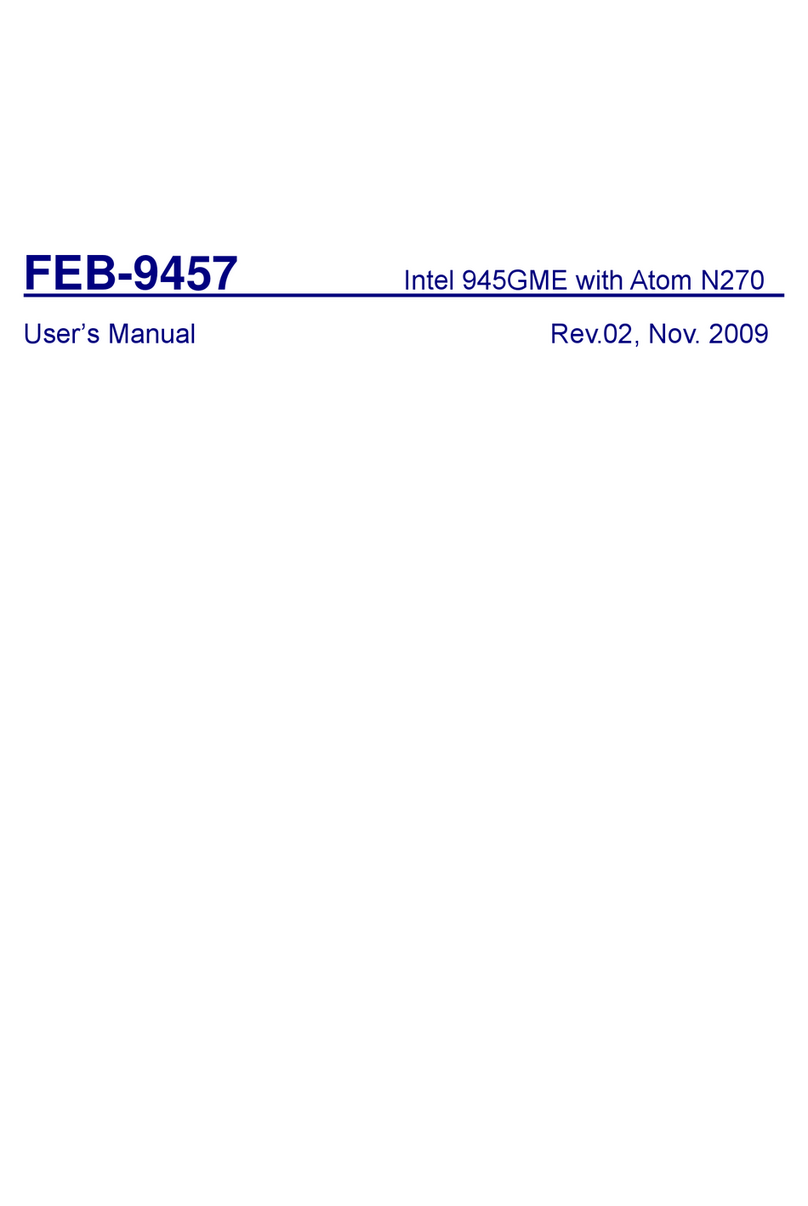
Intel
Intel 945GME user manual
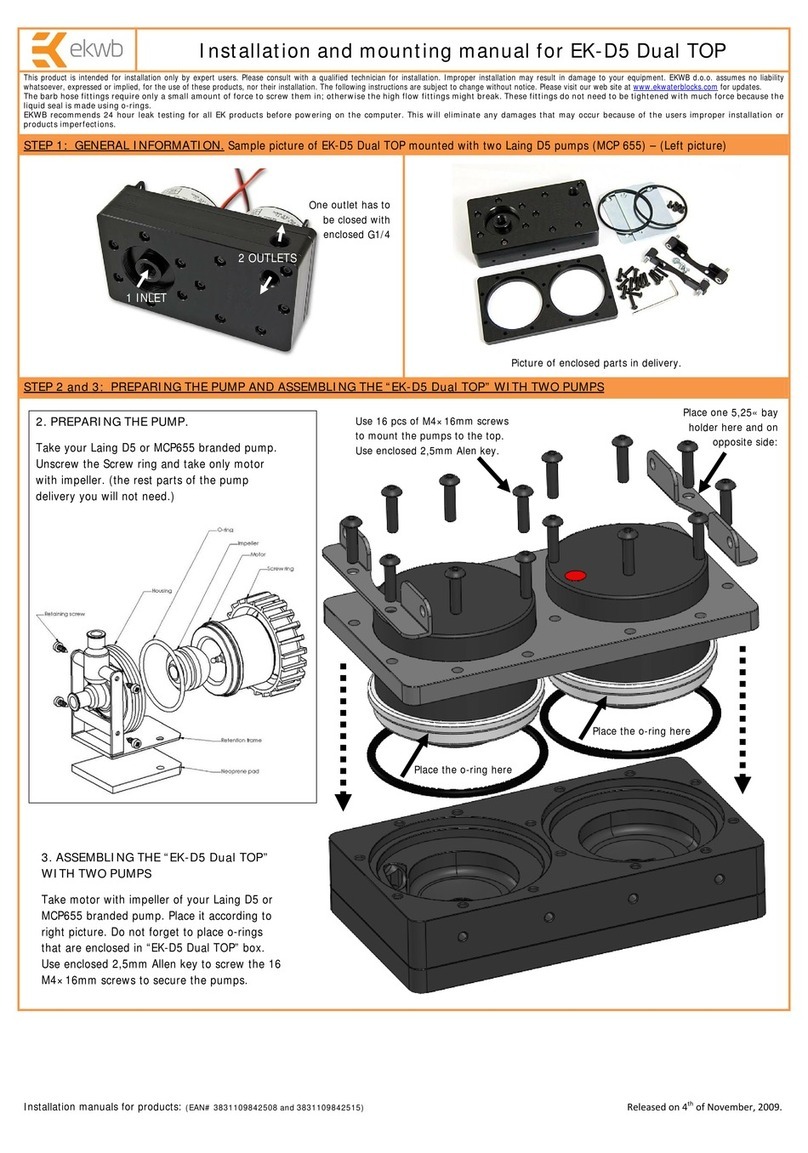
ekwb
ekwb EK-D5 Dual TOP Installation and mounting manuals
Cypress Semiconductor
Cypress Semiconductor CY4672 PROC quick start guide
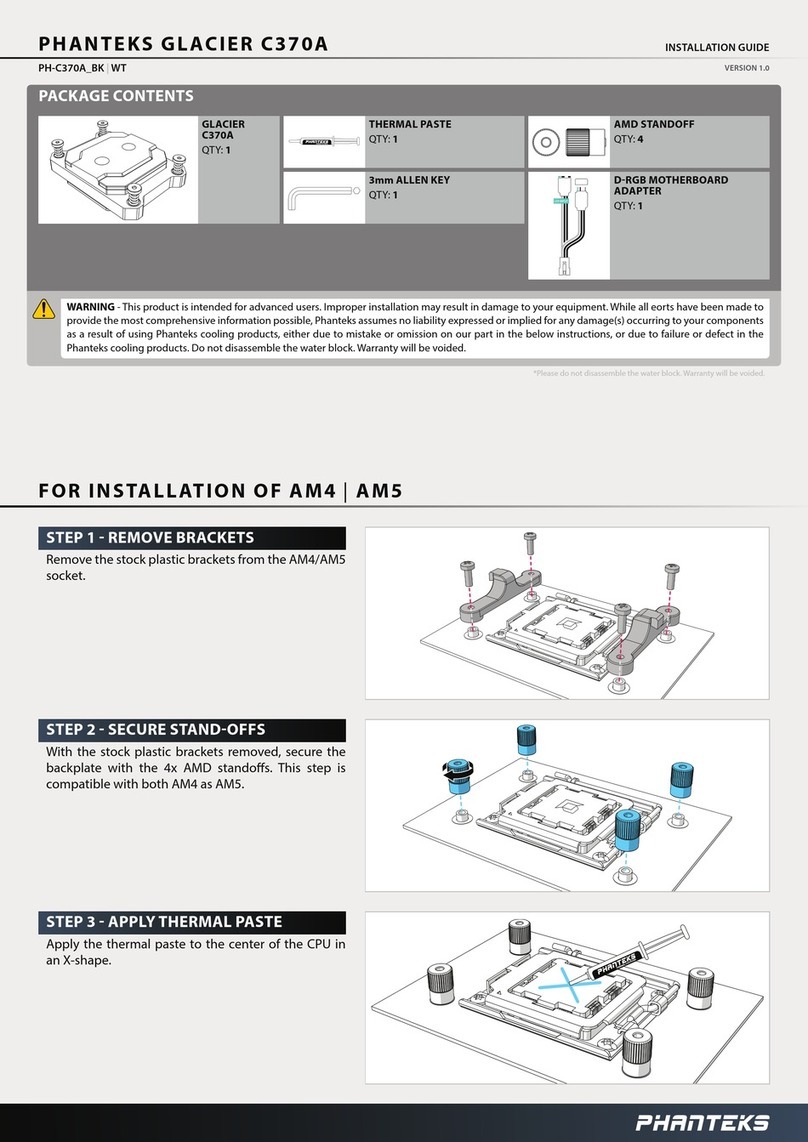
Phanteks
Phanteks GLACIER C370A installation guide
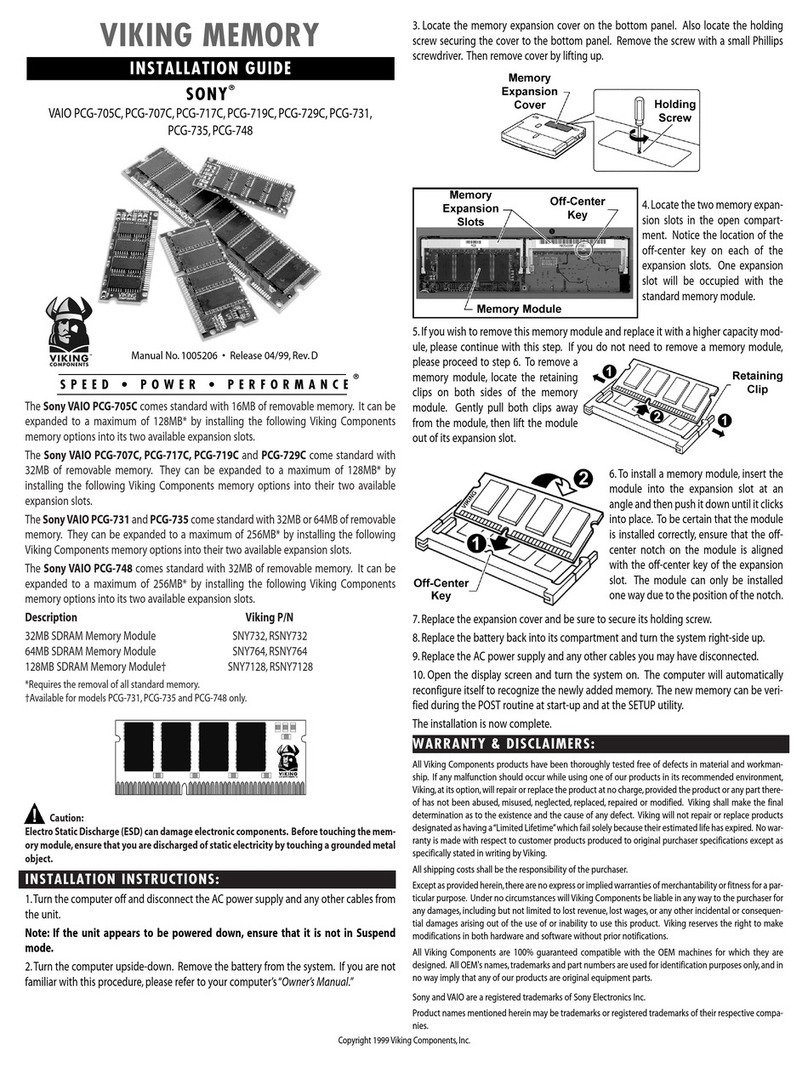
Viking Components
Viking Components VAIO PCG-707C installation guide
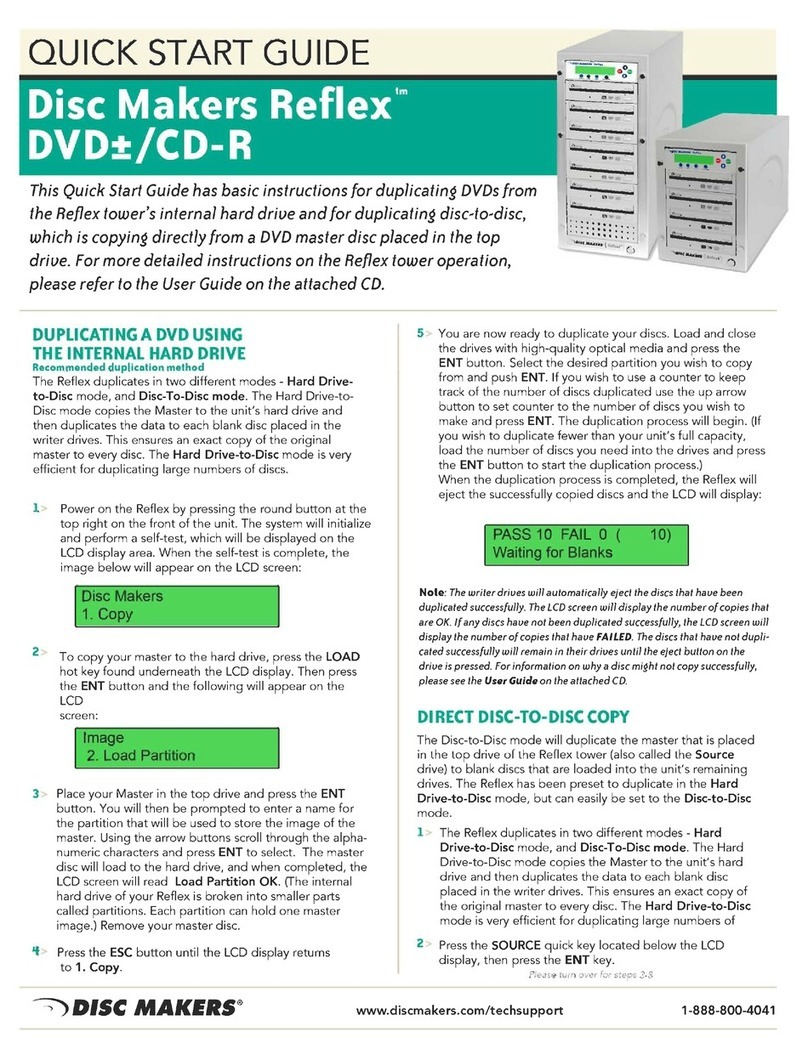
Disc Makers
Disc Makers Reflex4 quick start guide
